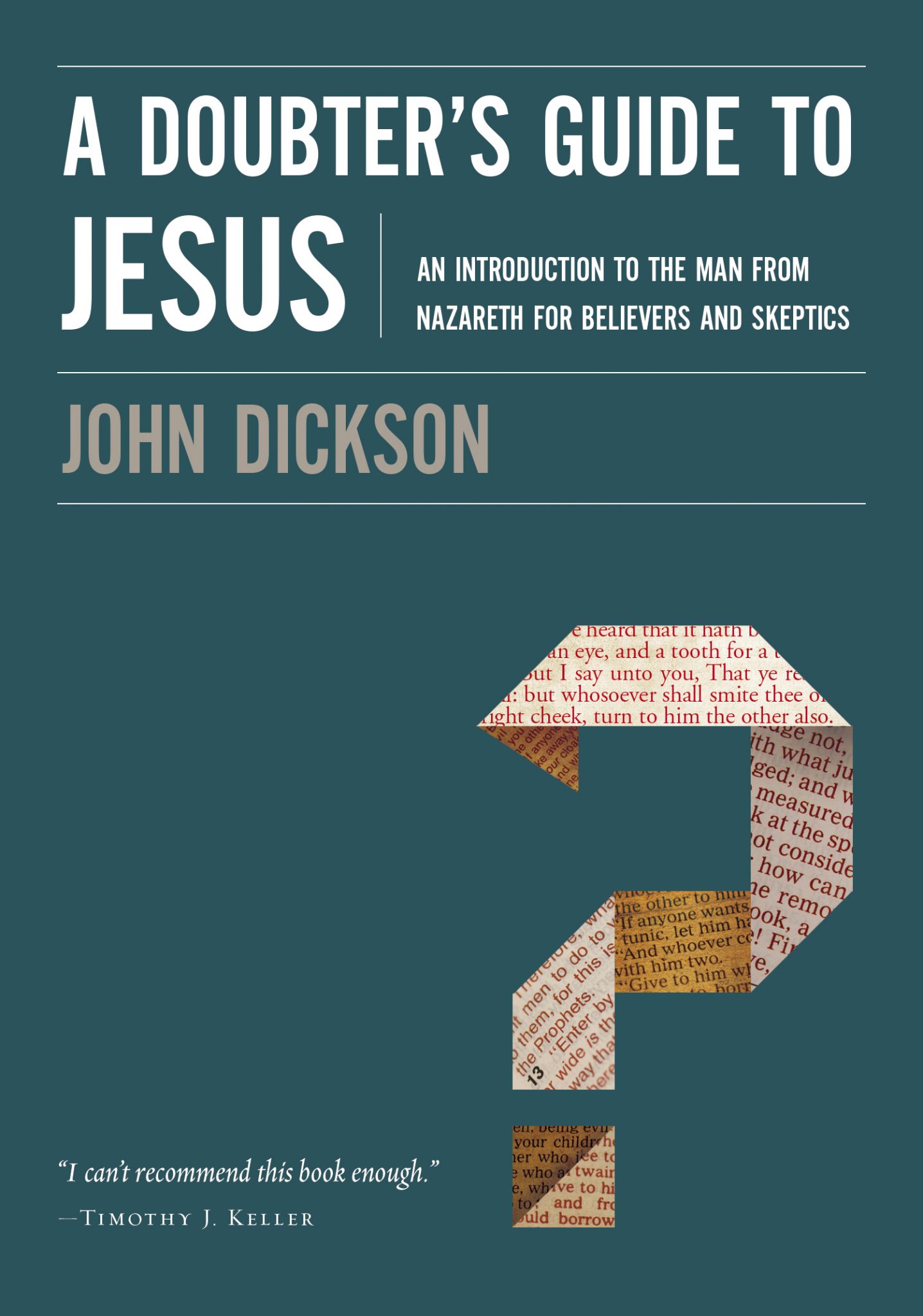“Are you saying you have the authority to tell people like me to stop following Jesus Christ?” I asked the secular university student.
We’d just been talking about the Christian view of sexual ethics, specifically my view that marriage is by definition between a man and a woman. He responded that such a view of marriage is unacceptable, so I pointed out the implication of what he was saying, which was that I would need to stop following Jesus.
It was Jesus, after all, who taught that marriage is predicated on the difference between male and female (see Matt. 19:3–6). I’m simply trying to follow his teaching. To abandon my view of marriage would mean to abandon the one from whom I had learned it. I would need to ditch Jesus, and I wanted the student to know this was what he was ultimately demanding. Pressed on this point, he demurred, and the conversation moved on.

A Doubter's Guide to Jesus: An Introduction to the Man from Nazareth for Believers and Skeptics
John Dickson
A Doubter's Guide to Jesus: An Introduction to the Man from Nazareth for Believers and Skeptics
John Dickson
After two millennia of spiritual devotion and more than two centuries of modern critical research, we still cannot fit Jesus into a box. He is destined to stretch our imaginations, confront our beliefs, and challenge our lifestyles for many years to come.
In A Doubter’s Guide to Jesus readers will be both disturbed and intrigued by the images of Jesus found in the first sources.
This university student claimed to be an atheist. He didn’t believe in God. He didn’t believe in Jesus. And yet it seemed he didn’t fully disbelieve Jesus, either. Something made him hesitate to explicitly tell someone to stop following Jesus. As sure as he was about all sorts of other matters pertaining to religion, this point made him pause and change tack. He wasn’t quite ready to go head to head with Jesus.
It’s no novelty to observe that we in the West inhabit an increasingly secular culture, and yet there’s still reluctance to fully write off Jesus. Whatever people think of the movement that bears his name, Christ still features prominently in our cultural consciousness as someone we can’t simply ignore, let alone jettison. We may be done with religion, and we may be done with Christianity. But we’re not yet done with Jesus.
Introducing Jesus
Therefore, it’s vital to have a good introductory resource about Jesus: the Jesus who really did come and walk this earth, the Jesus we see so magnetically presented in the Gospels. And yet such resources aren’t in great supply. Books on Jesus tend to be too shallow, too preachy, or too technical for most of the skeptical people I know. In some of the books there’s an axe to grind against some part of the church or a desire not just to introduce you to Jesus, but also to make sure you land in the right place on some specific secondary issues in Christian belief.
So it’s a joy to commend John Dickson’s new book, A Doubter’s Guide to Jesus: An Introduction to the Man from Nazareth for Believers and Skeptics. (I say “new”; it’s actually a revision of an earlier, out-of-print Australian book called A Spectator’s Guide to Jesus.) Dickson is a New Testament historian, public theologian, and local church pastor, and has written two previous volumes in this particular format, A Doubter’s Guide to the Ten Commandments and A Doubter’s Guide to the Bible, as well as other books on the life of Jesus and the historical reliability of the New Testament Gospels.
We in the West inhabit an increasingly secular culture, and yet there’s still a reluctance to fully write off Jesus.
A Doubter’s Guide to Jesus examines the various portraits of Jesus we find in both the biblical and also historical record. These portraits include Jesus the teacher, the performer of miraculous deeds, the bringer of justice, the friend of sinners, the claimer of lordship, and the sacrificing servant. For each of these Dickson draws on extrabiblical historical sources alongside the New Testament to show that the unique (and at times) uncomfortable claims Christians make about Jesus have historical basis, and that even the most skeptical won’t be able to dismiss Jesus without sacrificing historical integrity.
Dickson is careful not to over-claim what we can know from extrabiblical sources. He isn’t setting out, for example, to “prove” the resurrection; instead he’s trying to demonstrate the historical veracity of the empty tomb and that the earliest Christians believed in the resurrection, while teasing out some of the implications of this belief for how we think today.
Gentle Guide
There are significant strengths to Dickson’s approach. He isn’t pretending to write as a neutral, dispassionate observer. He’s clear about his own convictions. But the book doesn’t feel partisan, or like he’s relentlessly pushing you to agree with him. He uses mainstream historical research, and by so doing demonstrates the implausibility of the more radical skeptics who attempt to claim Jesus didn’t exist at all, or who argue for a Jesus who bears little resemblance to the Christ of biblical Christianity.
A Doubter’s Guide to Jesus is gentle and gracious throughout. Dickson comes across as sitting next to you, rather than as a fanatic speaking at you or as an academic talking down to you. He writes in a way that’s winsome, thought-provoking, and profoundly illuminating. The chapters are long enough to cover substantial material, but never feel unwieldy or bogged down.
In short, Dickson’s volume is one I would confidently commend to my most secular friends. He models not just good, clear, and compelling writing, but also a way of speaking to skeptics that shows he has listened carefully to them, understood them, and takes their objections seriously. This will easily be one of the top two or three books I press into the hands of others, devotee or skeptic alike.




































